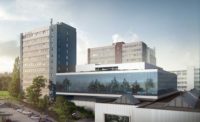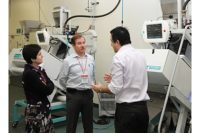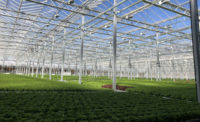Bühler opens CUBIC innovation campus
The new innovation campus is integrated into the Bühler site in Uzwil, Switzerland, linking the development, engineering and design teams with the modernized application centers and the factory.

After a 20-month construction period and a CHF 50 million investment, Bühler Group, Switzerland, opened its CUBIC innovation campus with eight application centers.
“We are with this driving forward our strategy of innovation, training and development,” says Stefan Scheiber, chief executive officer. “Together, with our customers, partners from industry and science, academia and start-ups, we are using the CUBIC to conduct research into new and sustainable solutions that we can apply to successful business ventures. And, we are taking a step forward here in providing modern training and development. This is our contribution to transforming the urgent global challenges of our time into solid business solutions together with customers, partners, academia and start-ups. In this campus, we are also promoting new professional skills and competencies, modern learning and working methods and collaborating with our partners.”
The three-story CUBIC is designed to accommodate up to 300 people, and is, in itself, a model of sustainability and innovation. The building uses 15% less energy than comparable structures of its size. Its smart electrochromic glass facade was coated on equipment from Bühler Leybold Optics. This enables Bühler to slash energy consumption for heating and air conditioning by as much as 50%. Building sensors measure carbon dioxide levels, air humidity, temperature and flow of people to continuously fine-tune the functionality and energy consumption of the CUBIC. On the basis of this smart building concept, Bühler expects to be able to sustainably optimize the operation of the building. The CUBIC also holds a LEED Gold-certified sustainability standard.
The new innovation campus is integrated into the Bühler site in Uzwil, Switzerland, linking the development, engineering and design teams with the modernized application centers and the factory. This enables Bühler to develop solutions together with customers, start-ups and industry and research partners up to the point of market maturity with much higher speed and efficiency. The CUBIC represents Bühler’s purpose of “Innovations for a better world,” and promotes new training and development methods.
Project teams from all Bühler business areas also currently reside in the CUBIC. Many of them are developing digital solutions, including Bühler Insights, a cloud-based IoT platform for digital services, created in partnership with Microsoft Corp., Redmond, Wash. About 20% of the R&D budget went into the development of digital solutions in 2018.
“The CUBIC campus will become the epicenter of our collaborative ecosystem,” says Ian Roberts, chief technology officer. “It embodies our innovation spirit and culture, where we will inspire, discuss, understand and derive actions that will support us as an industry to create more sustainable value chains, while contributing to addressing the burning environmental and societal challenges of our time.”
Application centers deliver shorter time to market
Vital elements of the new innovation campus are its eight modernized application centers.
In the Battery Lab, for example, researchers develop a new, continuous process for mixing electrode slurries applied in the manufacture of lithium-ion batteries.
In the Grinding & Dispersing Application Center, Bühler develops wet grinding and dispersion solutions for making printing inks, as an example.
In the Die Casting Application Center, five die-casting cells were installed for training operators and conducting customer tests.
In the Pasta Application Center, the latest pasta is being developed, for example, high-protein pasta containing flour from pulses or products with a proportion of microalgae.
The 3,000-square-meter Grain Technology Center is said to be the world’s largest Grain Milling Application Center. It also has its own analytics lab.
The Nutrition Application Center develops textured vegetable proteins –alternatives for the growing number of flexitarians.
The Bakery Innovation Center develops wholesome, fresh bakery products.
The Chocolate Application Center creates and tests new flavors and novel processes for cocoa-based products.
And, the Coffee Application Center is where customers test low-energy roasting processes to develop new taste variants.
Looking for a reprint of this article?
From high-res PDFs to custom plaques, order your copy today!






